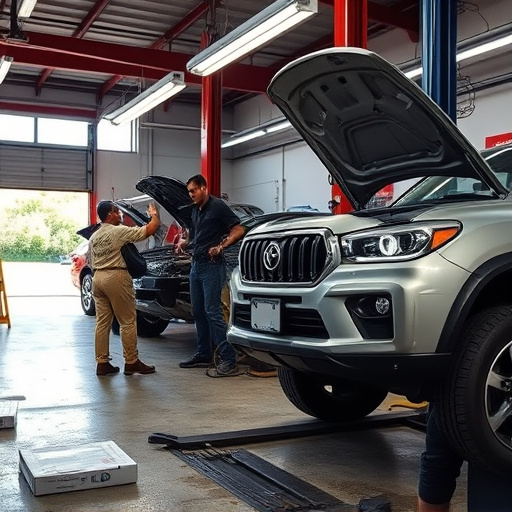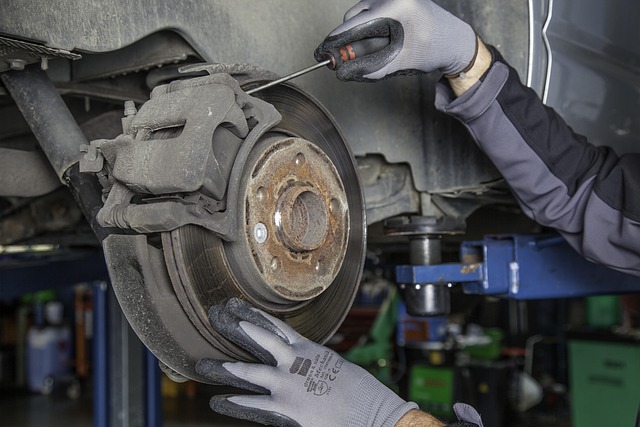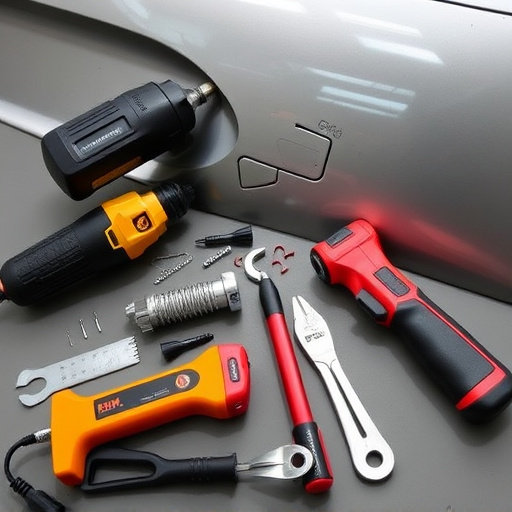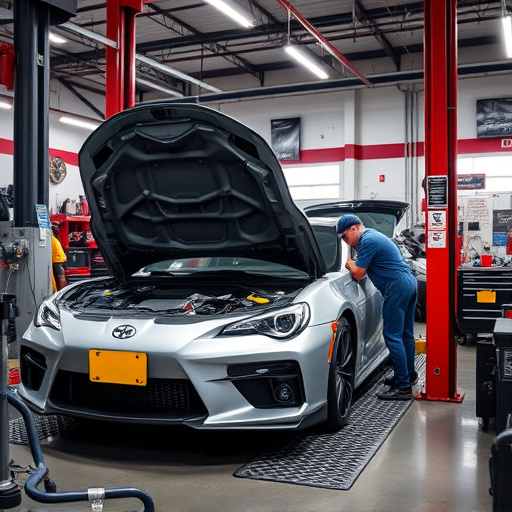Tesla electrical repair demands specialized knowledge of its complex systems, with the Vehicle Control Unit (VCU) as the central command hub. Repairs involve software reprogramming to resolve discrepancies and ensure system integration. Skilled technicians use advanced tools to modify firmware, optimizing performance and integrating features like Autopilot. Diagnosing issues requires specialized scanners for accurate assessment of components or error codes. Software reprogramming enhances performance and caters to diverse customer needs, contributing to Tesla vehicles' longevity and value.
“In the realm of Tesla ownership, understanding the intricate electrical systems and knowing how to address issues is paramount. This comprehensive guide delves into the heart of Tesla electrical repair and software reprogramming protocols. From deciphering complex electrical architectures to navigating diagnostic procedures, we equip owners with essential knowledge.
Learn about common electrical pitfalls in Tesla vehicles and gain insights into reprogramming software to access advanced features and boost performance. Embrace the power of informed ownership.”
- Understanding Tesla Electrical Systems: A Comprehensive Overview
- Diagnosing Common Electrical Issues in Tesla Vehicles
- Reprogramming Software: Unlocking Advanced Features and Performance
Understanding Tesla Electrical Systems: A Comprehensive Overview

Tesla vehicles are renowned for their cutting-edge technology and innovative electrical systems. Understanding these intricate networks is paramount when it comes to effective Tesla electrical repair. The car’s onboard computer, known as the Vehicle Control Unit (VCU), acts as the central command center, controlling various functions like motor operation, battery management, and driver assistance features. This sophisticated system relies on a complex network of sensors, actuators, and wires, making accurate diagnosis and repair critical for optimal performance.
When it comes to Tesla electrical repair, addressing issues goes beyond simply fixing broken components. It involves precise reprogramming of software to ensure the vehicle’s systems operate harmoniously. Reprogramming can be necessary after a vehicle collision repair or fender repair, as these events might disrupt the car’s sensors and cause discrepancies in data readings. Skilled technicians employ specialized tools to access and modify the firmware, ensuring the vehicle’s electrical systems function at peak efficiency, seamlessly integrating advanced features like Autopilot and over-the-air updates.
Diagnosing Common Electrical Issues in Tesla Vehicles
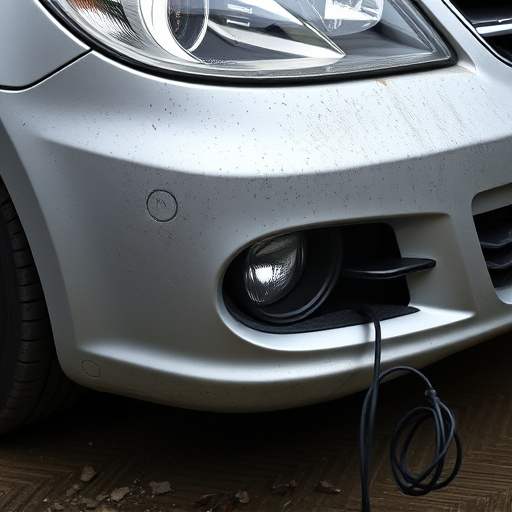
Diagnosing common electrical issues in Tesla vehicles involves a meticulous process that combines advanced diagnostic tools and a deep understanding of electric vehicle (EV) systems. The first step is to connect a specialized scanner to the car’s onboard computer, which can identify faulty components or error codes indicative of electrical problems. This initial assessment helps technicians pinpoint specific areas needing attention, whether it’s a damaged battery module, faulty wiring harness, or a compromised power control unit.
Many Tesla electrical repair services begin with checking for loose connections, corrosion, or damage to the extensive network of wires and connectors. Given the intricate nature of EV systems, proper diagnostics are crucial to avoid misdiagnoses. A well-equipped collision center or auto maintenance facility should have the necessary tools and trained personnel to handle these tasks effectively, ensuring accurate identifications and efficient repairs for Tesla owners facing electrical issues.
Reprogramming Software: Unlocking Advanced Features and Performance

Reprogramming the software within a Tesla vehicle is akin to unlocking a hidden potential in these cutting-edge machines. It involves fine-tuning the car’s computer systems to enhance performance, introduce advanced features, and tailor the driving experience to individual preferences. Through sophisticated coding and configuration, mechanics can access a range of capabilities that go beyond the standard model, making each Tesla unique. This process is especially beneficial for those involved in Tesla electrical repair, as it allows them to offer specialized services, catering to both modern drivers seeking performance upgrades and classic car restoration enthusiasts looking to revive older models with contemporary technology.
For fleet repair services or individual vehicle owners, software reprogramming opens doors to a world of possibilities. It can optimize fuel efficiency, improve braking systems, enhance infotainment features, and even integrate advanced driver-assistance systems (ADAS). By reprogramming, mechanics can address specific customer needs, whether it’s increasing the power output for better acceleration or adding customized driving modes. This level of customization not only satisfies diverse preferences but also contributes to the longevity and value of Tesla vehicles, ensuring they remain at the forefront of automotive technology for years to come.
In conclusion, understanding Tesla’s intricate electrical systems and employing effective diagnostic methods are pivotal for addressing common vehicle issues. Reprogramming software offers a gateway to unlocking advanced features and enhancing performance, making it an essential aspect of Tesla ownership. By mastering these protocols, whether for repairs or customizations, owners can ensure their vehicles remain at the forefront of automotive technology.
